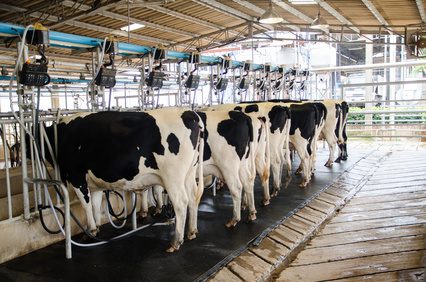A small price to pay for free milk

Canada’s system of production quotas and import barriers in the dairy, egg and poultry sectors has come under heavy fire. Defenders of supply management — which aims to restrict supply to increase prices paid by consumers and profits for producers — argue that farmers lawfully bought the quotas that protect them from competition. While the policy has been largely unsuccessful at protecting farms (dairy and poultry farms have disappeared at a rate similar to all other farms), it is true that dismantling the current regime without compensation would be unfair.
Most dairy and poultry farmers paid a significant sum for their quotas, and even took out mortgages to acquire them. They hoped to capitalize on the higher prices consumers must pay and then perhaps to sell their quotas to the next player. Ending supply management without compensation would leave them saddled with the interest costs of the loans used to buy the quotas, but without the asset itself. As such, it is only fair that some compensation should be offered.
Some say that the need for such compensation makes dismantling the current regime impossible, but this is not true. The accounting value of the quotas currently equals $13 billion. Ending them would be a one-time cost, but recurring benefits to consumers would total somewhere between $5.5 billion and $6.7 billion each year. These savings would result from the ability of Canadian farmers to enter the industry more freely, unburdened by the cost of acquiring quota, and from the free entry of foreign products into Canada. This would increase supply, causing prices to fall. And these are conservative estimates that do not account for potential gains for producers in terms of access to foreign markets. In the space of a few years, the costs of transitioning to a freer market would be overwhelmed by the substantial benefits.
The best course of action would likely be to spread compensation over a decade or so by using a transitory tax whose proceeds would go directly to farmers. This is what Australia did when it successfully ended its own supply management regime at the turn of the millennium. If the government chooses to follow such a course, it would have to offer farmers $1.6 billion a year over 10 years to equal the present value of the quotas. With such a scenario, payments to farmers would be substantially lower than the conservative estimates of consumer savings.
How much would this tax represent? For two litres of milk, the tax would be 23 cents, an amount that is dwarfed by the savings to consumers, thanks to increased competition. The price for a two-litre carton, which currently stands at $4.93, would drop to $2.31 after liberalization, even accounting for the tax meant to compensate farmers. As such, Canadian consumers would save $2.62 each time they buy a two-litre carton of milk, more than half the actual cost!
To be sure, the government could choose to offer a greater level of compensation to farmers. In fact, we calculated that even if the government chose to reimburse at full market value (which would be overly generous to farmers who bought their quotas at a fraction of the current market value and profited handsomely from them for years), the benefits from liberalization still outweigh the costs.
With the scientific literature being close to unanimous regarding the heavy costs of supply management, there is simply no case to be made for its conservation. There are also no grounds for claiming that the need for compensation is a sufficient reason to block reform. In fact, far from being a barrier to change, compensation for the quotas should be seen as a realistic means of extricating ourselves from an outdated and unfair system.
Vincent Geloso and Alexandre Moreau are respectively Associate Researcher and Public Policy Analyst at the MEI. They are the authors of "Ending Supply Management with a Quota Buyback" and the views reflected in this op-ed are their own.
____________________
Read more articles on the themes of "Agriculture" and "Regulations."

